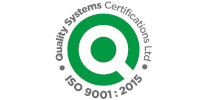GLA Energy Guidance Update 2018
You may or may not be aware that the GLA have released new guidance for the production of a London Plan energy report. The upshot is that whilst the over target of improvement of Part L hasn’t changed, the way you achieve it has, which puts more onus on the fabric and services before renewable technologies are considered.
In October they changed the way energy assessment needs to be calculated and written for Domestic and Non-Domestic Buildings. The changes to the method of reporting has been summarised below:
Modelling the energy hierarchy in IES or SAP:
Be Lean – Includes passive measures as before but also has to include active measures (lighting, HVAC efficiencies etc). The results of the Be Lean phase then have to result in the following improvements:
- Domestic developments should achieve at least a 10% improvement on Building Regulations for energy efficiency.
- Non-domestic developments should achieve at least a 15% improvement on Building Regulations from energy efficiency.
The green measures will then further improve to hit the 35% reduction in CO2 over Part L 2018 requirement.
Overheating has to follow guidelines (Cooling hierarchy) as required in Policy 5.9 of the London Plan and also as detailed in the guidance.
The results then have to be reported as stipulated on pages 16-20 of the document. Figures need to be converted into Tonnes of CO2 per annum.
The targets highlighted in items 1 and 2 above potentially will have an impact on how we design buildings as we now have two targets to hit. Firstly passing Part L 2013 by 15% without any renewables, which can be difficult to achieve for certain types of buildings and then secondly achieving the overall 35% reduction with renewables.
And in addition to, the document states the following (At the Be Green Stage)
“The GLA expects all major development proposals to maximum on-site renewable energy generation. This is regardless of whether a 35% target has already been reached through earlier stages of the energy hierarchy. In particular, solar PV should be maximised on roof spaces”
and
11.5. For the avoidance of doubt, heat pumps are categorised under this third and final element (be green) of the energy hierarchy (not the first element, “be lean”).
Which changes the approach for the first level of carbon savings.
Talk to Our Expert Team
If you would like to learn more about the range of services we offer, please get in touch for an informal discussion about your needs and requirements.






